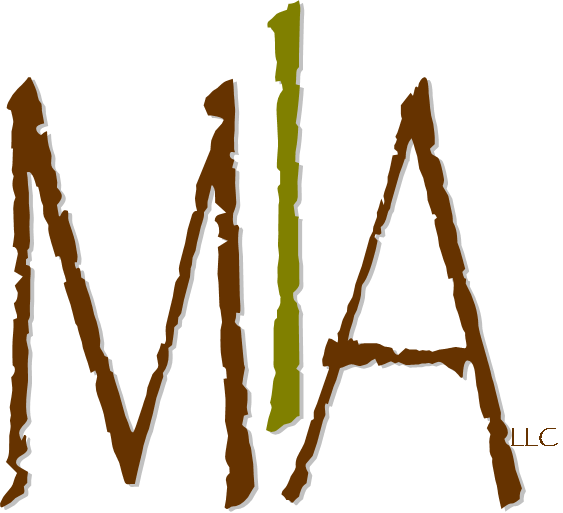
Release Information
Login to edit
Agent
Urophora quadrifasciata (Meigen)
Class: Insecta
Order: Diptera
Family: Tephritidae
Agent Name References:
- Coombs, E.M. 1997. Biological control of weeds in Oregon. Annual Report. Project summaries 1996. Oregon Department of Agriculture, Noxious Weed Control Program, Salem, Oregon, USA. 33 pp.
- Piper, G.L. and S.S. Rosenthal. 1995. Diffuse knapweed. In J.R. Nechols, L.A. Andres, J.W. Beardsley, R.D. Goeden, and C.G. Jackson, Eds. Biological Control in the Western United States: Accomplishments and Benefits of Regional Research Project W-84, 1964-1989. Publication 3361. University of California, Division of Agriculture and Natural Resources, Oakland, California. pp. 237-241.
Weed
Centaurea diffusa Lam.
Family: Asteraceae
Common Name: diffuse knapweed
Origin: Eurasia
Weed Name References:
- Seastedt, T.R., D.G. Knochel, M. Garmoe, and S.A. Shosky. 2007. Interactions and effects of multiple biological control insects on diffuse and spotted knapweed in the Front Range of Colorado. Biological Control 42: 345-354.
- Story, J.M., G.L. Piper, and E.M. Coombs. 2004. Knapweeds. In E.M. Coombs, J.K. Clark, G.L. Piper, and A.F. Cofrancesco, Eds. Biological Control of Invasive Plants in the United States. Oregon State University Press, Corvallis, Oregon. pp. 196-232.
Weed Common Name References:
- Seastedt, T.R., D.G. Knochel, M. Garmoe, and S.A. Shosky. 2007. Interactions and effects of multiple biological control insects on diffuse and spotted knapweed in the Front Range of Colorado. Biological Control 42: 345-354.
- Story, J.M., G.L. Piper, and E.M. Coombs. 2004. Knapweeds. In E.M. Coombs, J.K. Clark, G.L. Piper, and A.F. Cofrancesco, Eds. Biological Control of Invasive Plants in the United States. Oregon State University Press, Corvallis, Oregon. pp. 196-232.
Weed Origin References:
- Seastedt, T.R., D.G. Knochel, M. Garmoe, and S.A. Shosky. 2007. Interactions and effects of multiple biological control insects on diffuse and spotted knapweed in the Front Range of Colorado. Biological Control 42: 345-354.
- Story, J.M., G.L. Piper, and E.M. Coombs. 2004. Knapweeds. In E.M. Coombs, J.K. Clark, G.L. Piper, and A.F. Cofrancesco, Eds. Biological Control of Invasive Plants in the United States. Oregon State University Press, Corvallis, Oregon. pp. 196-232.
Release and Source Information
List: 3 - Previously Used or Potential Agents Found in Exotic Ranges where their Deliberate Release is not Recorded
Year First Recorded: 1979
Region: North America
Country Found: United States of America
Subregion of Country: OR, WA
Subregion specific:
Source: Ex. Russia via Canada
Deliberate Redistribution?: Yes
Year Redistributed: post 1979
Country: United States of America
Subregion of Country: AZ, CO, NV, UT, WA, WY
Subregion specific:
Release History: First recorded in OR and WA in 1979, ID MT 1980, CA 1995; Intentionally redistributed throughout Northwest post 1979 (including but not limited to): within WA 1982, 1984-1985, to CO late 1980s, WY 1989, to AZ NV UT years unknown
Release Notes: Spread to the USA naturally from releases made in Canada in 1972, and likely redistributed accidentally in seed heads thought to contain only the approved Urophora affinis. Found attacking Centaurea stoebe subsp. micranthos and C. diffusa by 1979. Spread naturally to C. cyanus, C. jacea, C. nigra, C. solstitialis, C. virgata subsp. squarrosa, and C. ×moncktonii. Many intentional redistributions made on these species post 1979. Officially approved for redistribution in the USA in 1989.
Source Information References:
- Coombs, E.M. 1997. Biological control of weeds in Oregon. Annual Report. Project summaries 1996. Oregon Department of Agriculture, Noxious Weed Control Program, Salem, Oregon, USA. 33 pp.
- Coombs, E.M. 2013. (personal communication) Oregon Department of Agriculture, Noxious Weed Control Program, 635 Capitol St NE Salem, OR 97301 USA.
- Joley, D.B., D.M. Woods, and C.E. Turner. 1996. Biological control of diffuse knapweed, Centaurea diffusa. In L.G. Bezark, Ed. Biological Control Program 1995 Annual Summary. California Department of Food and Agriculture, Division of Plant Industry, Sacramento, California. pp. 24.
- Piper, G.L. 1985. Biological control of weeds in Washington: status report. In E.S. Delfosse, Ed. Proceedings of the VI International Symposium on Biological Control of Weeds. 19-25 August 1984, Vancouver, Canada; Agriculture Canada. pp. 817-826.
- Piper, G.L. and S.S. Rosenthal. 1995. Diffuse knapweed. In J.R. Nechols, L.A. Andres, J.W. Beardsley, R.D. Goeden, and C.G. Jackson, Eds. Biological Control in the Western United States: Accomplishments and Benefits of Regional Research Project W-84, 1964-1989. Publication 3361. University of California, Division of Agriculture and Natural Resources, Oakland, California. pp. 237-241.
- ROBO Database. 2012. Release of beneficial organisms in the United States and Territories. USDA ARS. www.ars-grin.gov/nigrp/robo.html. 10 September 2012.
- Seastedt, T.R., D.G. Knochel, M. Garmoe, and S.A. Shosky. 2007. Interactions and effects of multiple biological control insects on diffuse and spotted knapweed in the Front Range of Colorado. Biological Control 42: 345-354.
- Story, J.M., G.L. Piper, and E.M. Coombs. 2004. Knapweeds. In E.M. Coombs, J.K. Clark, G.L. Piper, and A.F. Cofrancesco, Eds. Biological Control of Invasive Plants in the United States. Oregon State University Press, Corvallis, Oregon. pp. 196-232.
Original Host Species
Centaurea sterilis Steven
Original Host Species References:
- Harris, P. 1980. Establishment of Urophora affinis Frfld. and U. quadrifasciata (Meig.) (Diptera: Tephritidae) in Canada for the biological control of diffuse and spotted knapweed. Zeitschrift für Angewandte Entomologie 89: 504-514.
Establishment
Established: Yes
Established in Subregion of Country: CA, CO, ID, MI, MT, NV, OR, UT, WA, WY
Established in Subregion specific:
Establishment References:
- Andreas, J.E., E.M. Coombs, J. Milan, G.L. Piper, and M. Schwarzländer. 2013. Biological Control. In E. Peachey, D. Ball, H. A., J. Yenish, T. Miller, D. Morishita, and P. Hutchinson, Eds. Pacific Northwest Weed Management Handbook. Oregon State University, Corvallis, Oregon. pp. B1-B6.
- Coombs, E.M. 2013. (personal communication) Oregon Department of Agriculture, Noxious Weed Control Program, 635 Capitol St NE Salem, OR 97301 USA.
- Piper, G.L. and S.S. Rosenthal. 1995. Diffuse knapweed. In J.R. Nechols, L.A. Andres, J.W. Beardsley, R.D. Goeden, and C.G. Jackson, Eds. Biological Control in the Western United States: Accomplishments and Benefits of Regional Research Project W-84, 1964-1989. Publication 3361. University of California, Division of Agriculture and Natural Resources, Oakland, California. pp. 237-241.
- Pitcairn, M. 2013. (personal communication) California Department of Food and Agriculture, Biological Control Program, 3288 Meadowview Road, Sacramento, California 95832 USA.
- Woods, D. and V. Popescu. 2009. Diffuse knapweed biological control in California: 1976-2008. In D.M. Woods, Ed. Biological Control Program 2008 Annual Summary. California Department of Food and Agriculture, Plant Health and Pest Prevention Services, Sacramento, California. pp. 43-46.
- Lang, R.F., R.D. Richard, J. Winkler, and G. Wheeler. 2001. Distribution of Urophora affinis and U. quadrifasciata (Diptera: Tephritidae) for biological control of spotted knapweed (Centaurea maculosa) and diffuse knapweed (Centaurea diffusa) in Michigan. The Great Lakes Entomologist 34 (1): 31–42.
Abundance
Moderate
Abundance References:
- Piper, G.L. and S.S. Rosenthal. 1995. Diffuse knapweed. In J.R. Nechols, L.A. Andres, J.W. Beardsley, R.D. Goeden, and C.G. Jackson, Eds. Biological Control in the Western United States: Accomplishments and Benefits of Regional Research Project W-84, 1964-1989. Publication 3361. University of California, Division of Agriculture and Natural Resources, Oakland, California. pp. 237-241.
- Seastedt, T.R., D.G. Knochel, M. Garmoe, and S.A. Shosky. 2007. Interactions and effects of multiple biological control insects on diffuse and spotted knapweed in the Front Range of Colorado. Biological Control 42: 345-354.
- Story, J.M., G.L. Piper, and E.M. Coombs. 2004. Knapweeds. In E.M. Coombs, J.K. Clark, G.L. Piper, and A.F. Cofrancesco, Eds. Biological Control of Invasive Plants in the United States. Oregon State University Press, Corvallis, Oregon. pp. 196-232.
- Andreas, J.E., J. Milan, C. Randall, and J. Price. 2020. Biological Control. In E. Peachey, Ed. Pacific Northwest Weed Management Handbook. Oregon State University, Corvallis, Oregon. pp. A1-A7.
Agent Impact
Impact: Slight
Geographic Scale of impact: Widespread throughout range
Impact Notes: Well established throughout most Centaurea diffusa and C. stoebe subsp. micranthos-infested areas of USA, particularly the Northwest. More widely distributed than Urophora affinis but less abundant. Together they contribute to seed reduction of more than 50% at some sites. Seed reduction may retard rate at which weed spreads, but has not appreciably lowered stand density because sufficient seeds remain. Not considered as important or effective as Larinus spp. on this weed, and frequently inferior competitor to Larinus spp. and Metzneria. Overwintering predation limits many populations.
Impact References:
- Piper, G.L. and S.S. Rosenthal. 1995. Diffuse knapweed. In J.R. Nechols, L.A. Andres, J.W. Beardsley, R.D. Goeden, and C.G. Jackson, Eds. Biological Control in the Western United States: Accomplishments and Benefits of Regional Research Project W-84, 1964-1989. Publication 3361. University of California, Division of Agriculture and Natural Resources, Oakland, California. pp. 237-241.
- Seastedt, T.R., D.G. Knochel, M. Garmoe, and S.A. Shosky. 2007. Interactions and effects of multiple biological control insects on diffuse and spotted knapweed in the Front Range of Colorado. Biological Control 42: 345-354.
- Smith, L. and M. Mayer. 2005. Field cage assessment of interference among insects attacking seed heads of spotted and diffuse knapweed. Biocontrol Science and Technology 15(5): 427-442.
- Story, J.M., G.L. Piper, and E.M. Coombs. 2004. Knapweeds. In E.M. Coombs, J.K. Clark, G.L. Piper, and A.F. Cofrancesco, Eds. Biological Control of Invasive Plants in the United States. Oregon State University Press, Corvallis, Oregon. pp. 196-232.
- Andreas, J.E., J. Milan, C. Randall, and J. Price. 2020. Biological Control. In E. Peachey, Ed. Pacific Northwest Weed Management Handbook. Oregon State University, Corvallis, Oregon. pp. A1-A7.
Limiting Factors
Interspecific competition; Predation
Limiting Factors References:
- Smith, L. and M. Mayer. 2005. Field cage assessment of interference among insects attacking seed heads of spotted and diffuse knapweed. Biocontrol Science and Technology 15(5): 427-442.
- Story, J.M., G.L. Piper, and E.M. Coombs. 2004. Knapweeds. In E.M. Coombs, J.K. Clark, G.L. Piper, and A.F. Cofrancesco, Eds. Biological Control of Invasive Plants in the United States. Oregon State University Press, Corvallis, Oregon. pp. 196-232.
Other Attack
Were other species attacked?: No
Other Species Attacked Notes:
Research Organizations
California Department of Food and Agriculture, Sacramento (State (14))
Oregon State Department of Agriculture, Salem (State (15))
University of Idaho (State (6))
Montana State University (State (7))
Washington State University (State (9))
Bozeman, Montana (USDA (10))
Notes
Based on: Winston, R.L., M. Schwarzlander, H.L. Hinz, M.D. Day, M.J.W. Cock, and M.H. Julien, Eds. 2024. Biological Control of Weeds: A World Catalogue of Agents and Their Target Weeds. Based on FHTET-2014-04, USDA Forest Service, Forest Health Technology Enterprise Team. Available online at https://www.ibiocontrol.org/catalog/ [Accessed 19 April 2024].






